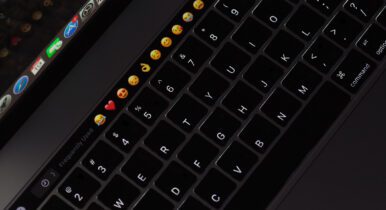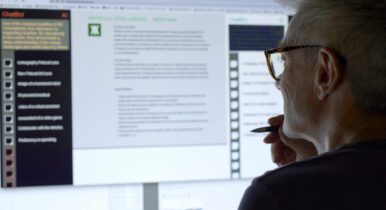Pro-Bono Work and ‘Clean Design’ in the Campaign Space

Megan Magray doesn’t think of herself as a political designer. The New York-based co-founder of Agitprop Collective, a small group of creatives working for clients on the left, works primarily with non-profit and advocacy organizations. And she always has a pro bono candidate on her roster.
Magray launched her career as a designer on the philanthropic comms team at Planned Parenthood. In a conversation with C&E, Magray talked about creative exploitation, what “clean design” looks like, and what she sees as the next campaign design trend:
Q: When you’re volunteering, are you worried about a commitment that grows too big?
Magray: I’ve tried to figure out the right balance over time. Right now I’m volunteering for Jaslin Kaur [a Democrat for city council district 23 in New York]. Most of her campaign is volunteer-driven and has the backing of NYC-DSA, which I’m politically committed to. I think the mark of a successful campaign is building organizing infrastructure and power that persists beyond the candidate and the campaign. If it’s really a political project for you, you have to be invested beyond just a paid gig.
But it’s something that I had to negotiate over time. Just knowing that when you’re entering into that work, you’re entering into it voluntarily. You have to just be clear about what your boundaries are. I am at a place in my career when I’m able to do that.
I think the culture in the corporate world is far more exploitative. When I dabbled with really intense, for-profit clients, I met a lot of people who see that work as their lives, and can’t envision a world beyond it. I find that the people I work with in both the political and non-profit world are much more committed to 1) respecting time, and 2) if the money is available, they’re also advocating for me and finding a way to raise my rate.
Q: What does clean design look like to you?
Magray: You need to scale things back, you need to understand a grid structure, you need to understand hierarchy and limiting palette. I don’t think it’s anything revolutionary, but still feels new to local politics. Something that candidates and campaigns should learn is that your voting blocs are not entirely comprised of young people who respond to super trendy, Instagram aesthetics that have really been taking over political design. That can be very off putting and intimidating to voters who aren’t in their 20s and have seen a lot of political design that feels more familiar and earnest to them.
If you’re a scrappy campaign without the backing of the machine, good design can legitimize you in the space. Design is important if you don’t have the resources, and the initial backing and investment from the powers that be. Good design can get you there with the people whose investment you actually want.
I also think it’s crucial to push away from candidate-as-brand, campaign-as-cult, an emphasis on hyper individualistic slogans — stuff that doesn’t resonate with voters. We need to be moving toward a place where design is a tool and it’s not trying to take the place of substance for campaign. But again, at the end of the day, the focus of the campaign shouldn’t just be winning. It should be building organizing infrastructure that outlasts a campaign. Any candidate should be wary of running a campaign that fails and nothing comes out of it.
Q: What trends in political design are you following?
Magray: There are two ends of the spectrum. First, there’s old, classic political design. Then there’s this other end where we’re pushing the boundaries and we’re creating a brand for a candidate and it goes too far into trying to tie this start-up-y, digital-first Instagram style to a candidate. Maybe it appeals to a certain segment of voters, but I think it can be off-putting to people who aren’t used to seeing that.
I try to stick to my, sort of, central design values: We’re working towards something that is clean and optimistic and open and bright.
We’re working on this campaign together because we really, really believe in what we’re doing. The constant tension for 99 percent of grassroots campaigns is, ‘we want to fit all of this text on this mailer,’ and everything is happening in a chaotic way and very last minute. We’re trying to ensure our material is not only accessible, but culturally competent. There are a lot of things to balance but at the end of the day it’s really about using design to advance the communication of your candidate’s values, not as a way to define them.



